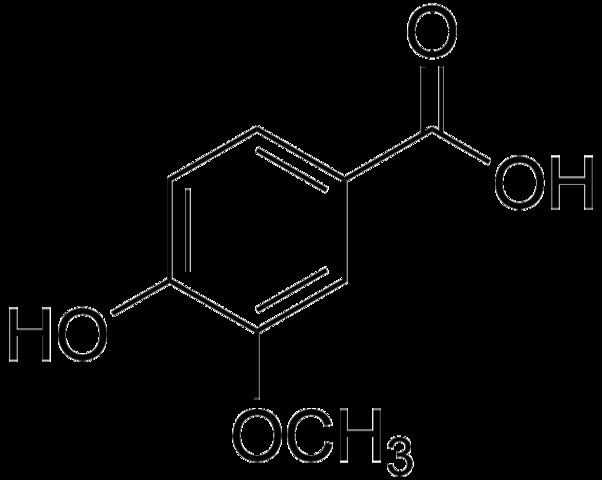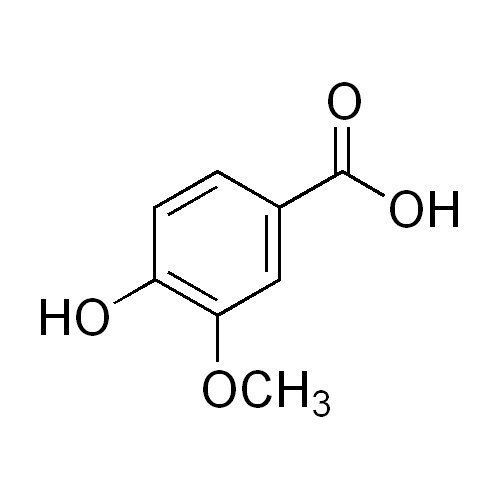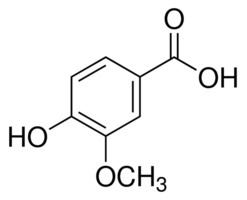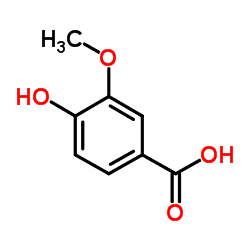Molar mass 168.14 g/mol Boiling point 353.4 °C | Formula C8H8O4 | |
 | ||
Related compounds Appearance White to light yellow powder or crystals | ||
Medical vocabulary what does vanillic acid mean
Vanillic acid (4-hydroxy-3-methoxybenzoic acid) is a dihydroxybenzoic acid derivative used as a flavoring agent. It is an oxidized form of vanillin. It is also an intermediate in the production of vanillin from ferulic acid.
Contents
- Medical vocabulary what does vanillic acid mean
- Occurrence in nature
- Occurrences in food
- Metabolism
- Synthesis
- Uses
- References

Occurrence in nature

The highest amount of vanillic acid in plants known so far is found in the root of Angelica sinensis, an herb indigenous to China, which is used in traditional Chinese medicine.
Occurrences in food

Açaí oil, obtained from the fruit of the açaí palm (Euterpe oleracea), is rich in vanillic acid (1,616 ± 94 mg/kg).
It is one of the main natural phenols in argan oil.
It is also found in wine and vinegar.
Metabolism
Vanillic acid is one of the main catechins metabolites found in humans after consumption of green tea infusions.
Synthesis
Oxidation of vanillin to the carboxylic acid occured in ~88% yield.
Uses
Vanillic acid is used in the synthesis of:

- the analeptic drug etamivan.
- Modecainide
- Vanillic acid is acetylated and converted to its acid chloride; S.B. amidation with bromhexine gives Brovanexine.
- Vanitiolide
- Vanyldisulfamide (need synthesis still).

